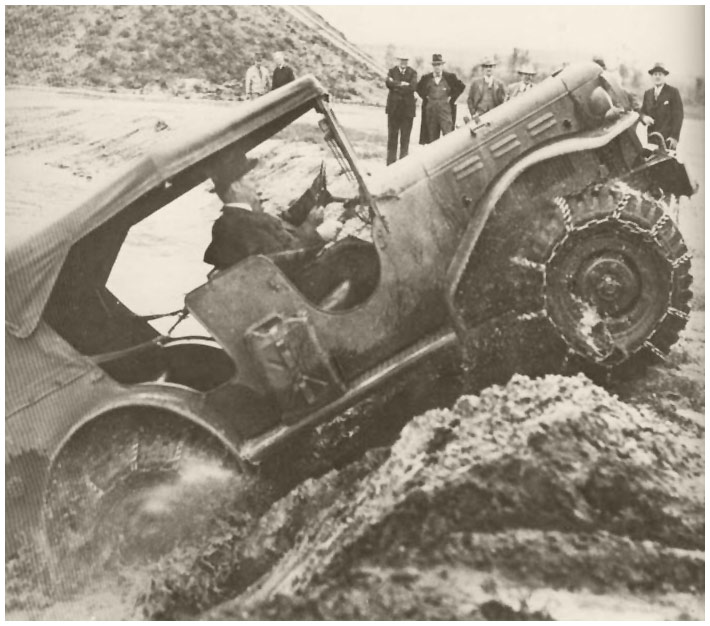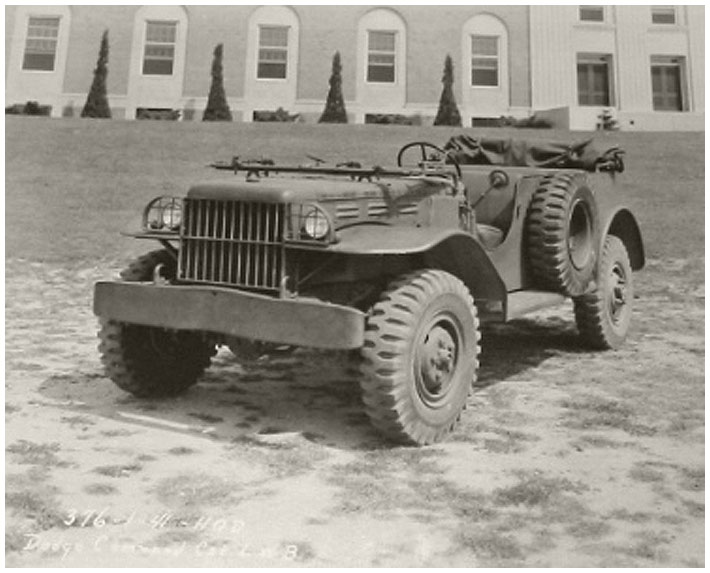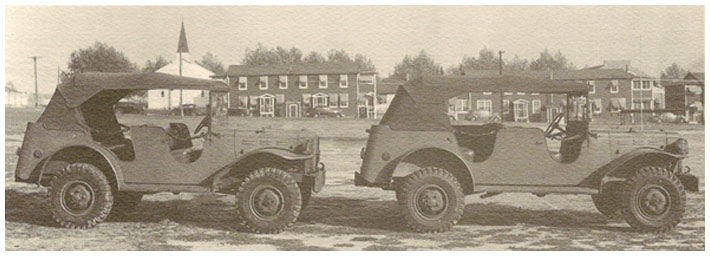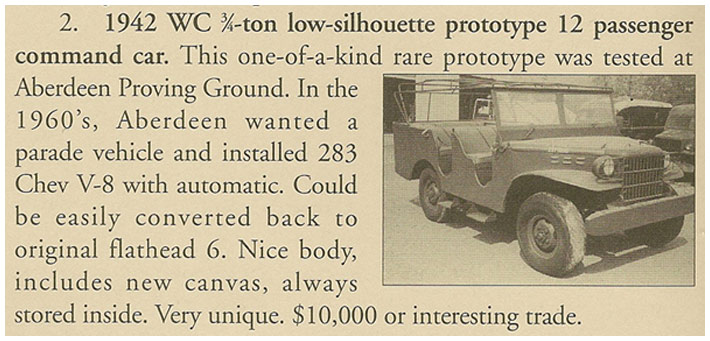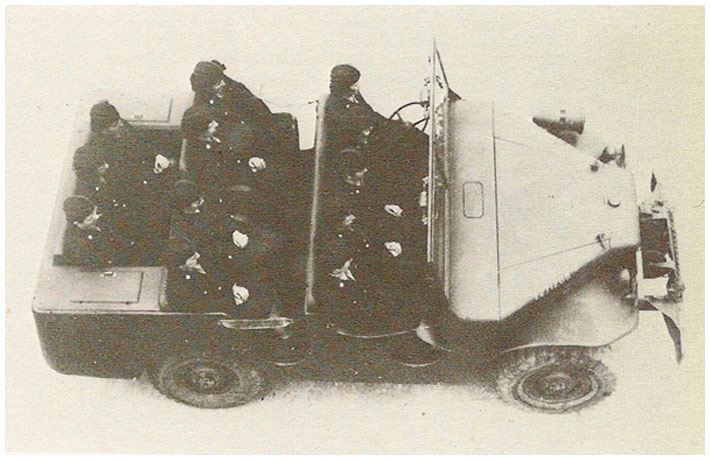|
Prototype / Pilot Dodge 3/4 ton Command Car 1942 - Historische Fotos Teil 6 von 6 |
|
| Prototypes and experimental versions of the 3/4 ton Command Car. |
| All info collected with the help from the Dodge Forum Members, special thanks to F. C. Denver, Colorado U.S.A. |
| Original forum thread can be found here: http://forum.ww2dodge.com/viewtopic.php?f=5&t=7866 |
| |
|
| A WC 3/4 ton pilot model Command Car on the 98" wheelbase. |
| The identifiers of this pilot model are the double curved front fenders, the WC 1/2 ton style headlight guards and, |
| noticeable by its absence, the lack of a 12 volt battery box on the passenger side running board. |
| This last feature tells us this pilot model had a 6 volt electrical system, just like the non-radio WC 1/2 ton Command Cars. |
|
| The reason the WC-58 model appears only in the first Quartermaster Corps (QMC) contract for the WC 3/4 |
| ton 4X4 Dodge trucks is that it was the special model 12 volt radio command car. But once the QMC |
| quickly decided to make all WC 3/4 ton Command Cars 12 volts, there no longer was any need for the WC-58 |
| because it functionally was replaced by the 12 volt WC-56 which, as shown in the bottom pilot model |
| photo, originally was designed as a 6 volt Command Car. |
| The name "DODGE" is stamped in relief into the edge of the engine hood above the center set of louvers. |
| Location: Chrysler's proving ground in Michigan. U.S.A. |
| Date taken: unknown, most probably before May 1942 |
| Photographer: unknown |
|
| Another WC 3/4 ton pilot model Command Car, this one on the 116" wheel base of the WC 1/2 ton Command Car. |
| Note the extended lugs on the rear axle for dualing up the rear wheels, although the shallow dish wheels on this |
| pilot model cannot be dualed together. The 116" wheelbase makes it possible to mount the spare tire rearward on the |
| body panel, seemingly blocking (or making a very tight) entry into the rear sear from this driver side, but leaving |
| free the entryway to the front seat from the driver side. But this 116" wheelbase was never adopted for the WC 3/4 ton |
| Command Car. |
| The name "DODGE" is stamped in relief into the edge of the engine hood above the center set of louvers. |
| Location: QMC's motor vehicle test facility at Camp Holabird in Maryland. |
| Date taken: unknown, most probably before May 1942 |
| Photographer: unknown |
|
| A passenger side photo of the 98" and 114" wheel base pilot model WC 3/4 ton Command Cars with the unusual |
| front fenders, from Vintage Power Wagon's January 1995 Newsletter. |
| VPW's Newsletter states the longer pilot model command car uses the 114" wheel base (and presumably chassis) |
| of the WC 3/4 ton Carryall, which makes practical sense. The side panel profile on the 114" wb Command Car is |
| like that a WC 1/2 ton Command Car, with a long center section. Note there is no rear seat entryway on the driver side. |
| Likely the barely visible spare tire left it too narrow to bother with, so a solid panel was installed there. |
| Photographer: unknown |
| Photo: VPW / Vintage Power Wagon |
|
| Another unusual Command Car:
|
| It is a later experimental truck based on the WC 3/4 ton 4X4 truck that was part of a separate program to lower the |
| vehicle profile and make these trucks closer to the ground. The only vehicle from that experimental low silhouette |
| program that went into production was the Ford 1-1/2 ton GTB truck. |
| Shown in Vintage Power Wagon's fall 1996 Newsletter for sale ad. |
| |
| And an overhead view of the truck from page 307 in Fred Crismon's book "U.S. Military Wheeled Vehicles". |
| This great passenger capacity was obtained by eliminating the running boards and pushing the body sides |
| out to full width. This full width body with tightly curved (rather than square) rear corners seems to be an |
| inspiration for the slightly longer body on the E-317. |
| Photographer: unknown |
| Photo 1: VPW / Vintage Power Wagon |
| Photo 2: Fred Crismon's "U.S. Military Wheeled Vehicles" |










